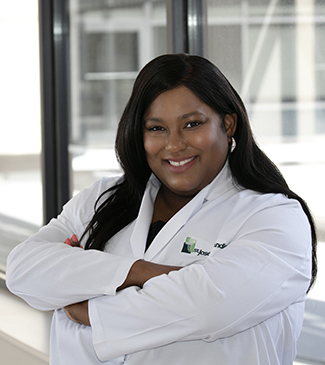Six things to know about iron-deficiency anemia
Family Health
St. Joseph’s/Candler Primary Care Physician Dr. Arianna Gordon answers some common questions about iron-deficiency anemia
Do you often feel fatigued and suffer from headaches, dizziness or even heart palpitations? These could be signs of anemia and should not be ignored.
Anemia is a common blood disorder and occurs with a decrease in total blood supply, including low counts of red blood cells and hemoglobin, says Dr. Arianna Gordon, family medicine physician with St. Joseph’s/Candler Primary Care on Eisenhower.

There are different types of anemia, but the most common type we see in practice is iron-deficiency anemia, Dr. Gordon says. Other types include Vitamin B12 deficiency (megaloblastic anemia), anemia of chronic disease, and acute blood loss anemia.
Iron-deficiency anemia occurs when you don’t have enough iron in your blood. Red blood cells carry a protein called hemoglobin. Most of the body’s iron is found in hemoglobin, which helps carry oxygen to your organs. If you have anemia, then the cells in your body are not getting enough oxygen.
“It is something we have to be cautious about, but it’s something that can improve and does improve for lots of patients,” Dr. Gordon says.
Here are six things to know about iron-deficiency anemia:
1. What can cause iron-deficiency anemia?
Iron-deficiency anemia is caused due to lack of iron in the diet. Other causes include significant loss of iron, as women often experience during menstruation.
2. How do you test for iron-deficiency anemia?
A blood test called a CBC – complete blood count – measures the hemoglobin level in your body. The normal range for hemoglobin is:
- For men, 13.5 to 17.5 grams per deciliter
- For women, 12.0 to 15.5 grams per deciliter
- Levels in children vary depending on age and gender
CBCs are part of a routine physical, which is why it is important to see a provider regularly.
If we see evidence of anemia on a panel, further confirmatory testing may be needed to ascertain the severity, Dr. Gordon says.
3. Who’s at risk for iron-deficiency anemia?
Anyone can get iron-deficiency anemia; however, certain populations are more at risk, Dr. Gordon says. One example is women who are pre-menopausal and menstruating.
“Populations where we look at anemia with a little more caution are any adult males and post-menopausal women,” Dr. Gordon says. “If there is anemia in any of these populations, we may do more investigation because that can signify a source of bleeding elsewhere.”
4. What are some symptoms of anemia?
Anemia may not initially show any symptoms and may be discovered incidentally on routine lab work. However, some people may experience a variety of symptoms including:
- Fatigue
- Shortness of breath
- Dizziness
- Lightheadedness
- Heart palpitations
- Paleness or loss of color
- Headaches
- Chest pain
5. How is iron-deficiency anemia treated?
There’s a whole spectrum of how you treat this type of anemia, and it depends on how severe it is, Dr. Gordon says. For most patients who are asymptomatic, Dr. Gordon would recommend an iron-rich diet. Traditionally that would include a lot of meat, particularly red meat and liver, but Dr. Gordon encourages focusing on more fruits and vegetables, especially dark leafy greens.
“Dark, leafy greens are an excellent form of iron, such as kale, spinach – Popeye was on to something –if you maintain a consistent intake of this and eat lots of fruits and vegetables in general, that can help with iron-deficiency anemia.”
If that doesn’t work, there are iron supplement medications available, and in more serious cases, patients may need iron infusions at an infusion center.
6. Can anemia be prevented?
One of the most important things you can do to reduce your risk of any type of anemia is routine check-ups and blood work with your primary care physician. Also, if you have any symptoms, mention them to your doctor.
Eating a well-balanced diet with iron-rich foods as Dr. Gordon mentioned and managing any chronic or underlying conditions that may cause anemia also can help. Taking a multivitamin with iron is also good for prevention.
Looking for a primary care physician? Book an appointment now with Dr. Gordon or find a doctor in your neighborhood on our Physician Network website.